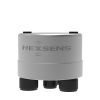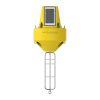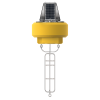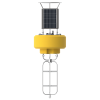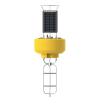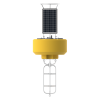Airmar 200WX-IPX7 Ultrasonic WeatherStation
Features
- Outputs both apparent and true wind speed & direction
- Integrated GPS, accelerometer & compass
- IPX7 waterproof rating for buoys and offshore platforms
- Free ground shipping
- Expedited repair and warranty service
- Lifetime technical support
- More
Overview
The Airmar 200WX-IPX7 meets a growing need for real-time, site-specific weather information. For moving applications where true and apparent wind are different, the 200WX includes additional sensors such as a 10Hz GPS, solid-state compass and tilt sensors. The 200WX features configurable RS-232 and CAN BUS digital data outputs, providing unparalleled versatility for nearly all weather monitoring needs.
Durable in Harsh Conditions
The Airmar 200WX-IPX7 outputs both apparent and true wind speed and direction. The Airmar 200WX is IPx7 rated and has been developed to be more robust and meet the operational challenges of the harsh ocean environment.
Meets Offshore Needs
Reliable environmental monitoring is critical for various offshore needs. The numerous sensors contained in the compact size of the 200WX is an attractive feature for installations where space is limited, such as on buoys, USVs, and AUVs.
- (1) 200WX-IPX7 WeatherStation
- (1) Post mount with 1-14 UNS threads
- (1) WeatherCaster Software CD
- (1) Calibration Certificate
- (1) Owner's Manual
In The News
Current Monitoring after the Francis Scott Key Bridge Collapse
On March 26th, according to The Baltimore Sun , a 984-foot, 112,000-ton Dali lost propulsion and collided with a support column of the Francis Scott Key Bridge, collapsing the structure. Soon after the event, search and rescue, salvage crews, and other emergency responders were mobilized after the collision. As salvage efforts progressed in early April, NOAA’s Center for Operational Oceanographic Products and Services (CO-OPS) responded to a request for real-time tidal currents data and deployed a current monitoring buoy—CURBY (Currents Real-time BuoY)—into the Patapsco River north of the Francis Scott Key Bridge.
Read MoreThin Ice: Year-Long Monitoring in Missouri Reservoirs
The value of multi-lake studies is well understood by international organizations like the Global Lake Ecological Observatory Network (GLEON) and the scientists who work tirelessly to provide data to the larger network. Rebecca North, an associate professor at the University of Missouri-Columbia , is one of many researchers involved in multi-lake research initiatives and conducting research locally in her home state. Having been born and raised on the shore of Lake Ontario, North grew up in a community that revolved around water. She also saw firsthand one of the worst water quality bodies of the world, the Bay of Quinte, decline throughout her lifetime.
Read MoreSustainable Data Collection: Climate Monitoring in the Caribbean
Environmental monitoring in the Caribbean may be essential, but it has also historically been placed on the back burner. Albert Jones, Instrumentation Officer for the Caribbean Community Climate Change Centre (CCCCC), explains, “Data collection itself is not what is considered one of those sexy activities where you can easily get funding.” Still, monitoring the water surrounding island nations is necessary to protect residents and the environment. The CCCCC works to establish environmental monitoring networks and systems in the Caribbean. One aspect of Jones’ work centers around data buoy instrumentation and deployment,—equipment that will be used to support Ecoforecasts for Coral Health Monitoring and to provide valuable environmental data to the public.
Read More








